Cho Oh-hyun
Cho Oh-hyun (Hangul: 조오현; 1932-2018) was a South Korean poet and Zen Buddhist monk.[1]
Cho Oh-hyun | |
|---|---|
 Cho in 2014. | |
| Born | 1932 Miryang, Korea |
| Died | 2018 |
| Pen name | Musan |
| Genre | Sijo poetry |
| Years active | 1968—2018 |
| Korean name | |
| Hangul | 조오현 |
| Hanja | 曺五鉉 |
| Revised Romanization | Jo O-hyeon |
| McCune–Reischauer | Cho Ohyŏn |
| Pen name | |
| Hangul | 무산 |
| Hanja | 霧山 |
| Revised Romanization | Musan |
| McCune–Reischauer | Musan |
| Dharma name | |
| Hangul | 만악 |
| Hanja | 萬嶽 |
| Revised Romanization | Manak |
| McCune–Reischauer | Manak |
Biography
Cho was born in Miryang, South Gyeongsang Province, Korea in 1932. He became a novice Buddhist monk in 1939 at the age of seven.[2]
Over the years he has written over a hundred poems, including many in sijo form. In 2007 he received the Jeong Jiyong Literature Prize for his book Distant Holy Man. He is Josil of Kibon Seonwon (Spiritual Master of Fundamental Seon Mediation Center) of Jogye Order of the Korean Buddhism at Baekdamsa Monastery and famous for his Poetry of Delusion. He founded Manhae Foundation and Manhae Prize in Korea. He started his Seon Poetry career in 1966. Soon in 1977, he became the abbot of Sinheungsa Temple[3] which is the 3rd Diocese of Jogye Order of the Korean Buddhism. His Books of Seon Poetry, Ten Ox-Herding was published in 1978, The Seon Anthology of Manak Gathas was published in 2002, A Remote Holy Man was published in 2007. Many authors have written on Seorak Musan Cho Oh Hyun. He became Josil of Kibon Seonwon (Spiritual Master of Fundamental Seon Mediation Center) of Jogye Order of the Korean Buddhism at Baekdamsa Monastery on 14 March 2014. He is renowned not only in South Korea but also in European and Asian countries like Germany, India, Sri Lanka, etc. for his poetry. He is also a painter. Lee (2011)[4] described the Wisdom of the Social Awakening emerged in the Gathas of Searching the Bulls : centering on Musan Cho Oh-Hyun’s Gathas of Ten Ox Herding.[5] He further elaborate that Seorak Musan Cho Oh-Hyun wrote Musan's Ten Ox Herding gathas as the process of his practice through Seon poems. He concluded that ox-herding story of Seorak Musan Cho Oh Hyun leads people to peaceful shelter to stop agony and awake the reality of the world truly. Ox-herding practice can be an alternative for awakening society. Lee (2013)[6] discussed Musan Cho Oh Hyun and Ethics Education. He revealed that Musan Cho Oh Hyun’s approach to ethics education is humanistic. His teachings import the carriage of leading a life worthy of a human being. While embodying the transcendental ethics of Seon Buddhism, Musan teaches that in order to lead a truly human life, it is paramount for all mortals to respect the collective rules of communities. In his exposition of the Buddhist ethics, Musan shows a supple understanding that goes beyond Sila and Vinaya, the rules of daily Buddhist lives.
Award and recognition
- 4th Modern Sijo (traditional three-stanza Korean poem) Literary Prize in 1992,
- 7th Nammyeon Literary Prize in 1995
- 16th Garam Literary Prize in 1996
- Garam Sijo Literary Prize in 2001
- Order of National Service Merit Camellia Medal in 2004
- 42nd Korea Literary Prize in 2005
- 19th Jeong Ji-Yong Literary Prize in 2007
- 16th Gongcho literary Prize in 2008
- DMZ (demilitarized zone) Peace Prize in 2009
- 23rd Pogyodaesang (Grand Prize of Transmission Dharma) of Jogye Order of the Korean Buddhism in 2011
- 13th Alpine Literary Prize, 2013[7]
- 4th Korea Art Award in poetry[8]
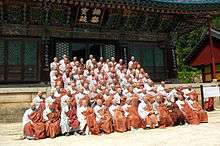
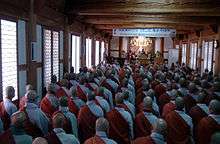
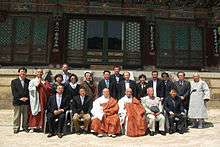
Works
His poems The Sound of The Ancient World, Today and Bodhidharma are published in World Literature Today.[9] Translation with explanatory notes of The Blue Cliff Record. It is a collection of Chán Buddhist koans originally compiled in China during the Song dynasty in 1125 and then expanded into its present form by the Chán master Yuanwu Keqin (1063–1135).
Translation with explanatory notes of The gateless Gate The Gateless Gate is a collection of 48 Chan (Zen) koans compiled in the early 13th century by the Chinese Zen master Wumen Hui-k’ai (1183–1260) (Japanese: Mumon Ekai). Wumen’s preface indicates that the volume was published in 1228. Each koan is accompanied by a commentary and verse by Wumen. A classic edition includes a 49th case composed by Anwan (pen name for Cheng Ch’ing-Chih) in 1246. Wu-liang Tsung-shou also supplemented the volume with a verse of four stanzas composed in 1230 about the three checkpoints of Zen master Huanglong. These three checkpoints of Huanglong should not be confused with Doushuai’s Three Checkpoints found in Case 47. 《Seon Question Seon Answer》《How to know the way of living, even don’t know to die》
He has written Anthropology of Manak Gathas, which is published in Korean, Singhalese, English, Hindi, German, etc.
A volume of his work, For Nirvana: 108 Zen Sijo Poems, was translated by Heinz Insu Fenkl[10] and published by Columbia University Press in 2016.
Present Position
Spiritual Master of Shinhungsa Temple of the 3rd Diocese of the Jogye Order of Korean Buddhism, Mugum Seonwon hermitage (not present Seon retreat House) of Baekdamsa Temple at Mt. Naeseorak.
The Chief Executive Director of Manhae Foundation (the Society for the Promotion and Practice of Manhae’s Thoughts) (Manhae[11] Sasang Silcheon Seonyang-hoe). Manhae Foundation awards The Manhae Prizes on August 12 ever year.
Present Stay
Seorak Musan Cho Oh-Hyun resides at Mugum Seonwon hermitage and Simwoojang (ox-herding hermitage) of Manhaemaul(village).
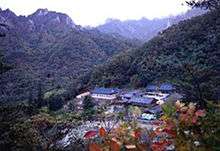
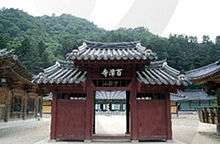
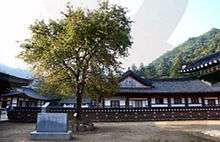
References
- Kim, Yeong-min (2014-05-01). "모두가 고해(苦海)에 배 띄운 선장들… 각자의 허물 돌아봐야". The Kyunghyang Shinmun (in Korean). Retrieved 2018-05-04.
- Cho, Hyun (2012-02-05). "대장경은 골동품일뿐 진리 없다". The Hankyoreh (in Korean). Retrieved 2018-05-04.
- "Archived copy". Archived from the original on 2010-03-27. Retrieved 2014-06-04.CS1 maint: archived copy as title (link)
- http://www.undv.org/vesak2011/panel4/11LeeChiRanFINAL.pdf
- Cho Oh-Hyun Manak Gathas. Trans. Lee Chi-Ran. Ed. Heero Hito and Ashok Maitrey, India : YSSSRF Publications, 2010, Pg. 11
- Chi Ran Lee (2013). H.H. Seorak Musan Cho Oh-Hyun and Ethics Education, Presented at International Seminar on Religious and Moral Education, held at Subharthi University, Meerut (U.P.) India
- 무산 조오현 스님 ‘적멸을… ’고산문학 대상 August 20, 2013
- 무산 조오현 스님 ‘적멸을… ’고산문학 대상 August 20, 2013
- World Literature Today; Sep/Oct2013, Vol. 87 Issue 5, p38
- Leyshon, Cressida. This Week in Fiction: Heinz Insu Fenkl, The New Yorker, July 27, 2015
- http://www.manhae.net Archived 2014-06-06 at the Wayback Machine